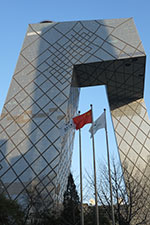|
By Tom Deegan, Partner at Sidley Austin
This note provides a summary and analysis of key inbound and outbound legal and regulatory developments in China. Background In particular, the provisions relating to VIE structures will certainly need further revisions as the current draft intentionally left unaddressed how existing VIE arrangements should be treated. MOFCOM explicitly acknowledged in the draft explanation notes that VIE related provisions will need to be finalised after further analysis and consultation with various stakeholders. |
 Company registration system The amendments to the PRC company law and the regulations on the administration of registration of companies taking effect on March 1, 2014, marked the shift of a paid-in capital registration system to a subscribed capital system that affords more autonomy to shareholders on matters relating to the registered capital of a company, and substantially shortens the timeframe of the incorporation process. Foreign exchange Investment project approvals Conclusion Post enactment of the FIL, foreign investors are expected to have more flexibility in negotiating the terms of their investment. This simplified process is more in line with practices in developed economies and is seen as a major stepping stone to making China more investor friendly. However, the draft FIL should not be looked at in isolation, but rather should be read in the context of shifting policy cycles and macro-economic promulgations. Creating a more friendly business environment is one of the key pledges made by Premier Li Keqiang, who has stressed that the government will “unswervingly” support and encourage the private sector during the opening meeting of the third session of China’s 12th National People’s Congress. The regulatory developments are testament to the government’s effort to deliver on Premier Li’s pledge. Moving forward, more reforms can be expected not only targeting foreign investors, but also extending to private investors and entrepreneurs. While it is possible to move capital into or out of the country, the process is still relatively onerous and foreign investors very often found their capital utilisation plan (formulated at the parent level) difficult to implement in China due to various restrictions in relation to foreign exchange. It will undoubtedly be well received by international investors if capital controls could be further relaxed, liberalised and streamlined in a manner closer to international best practice. |




















